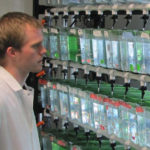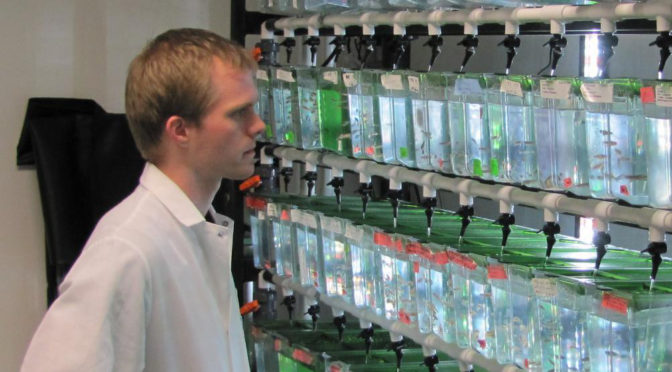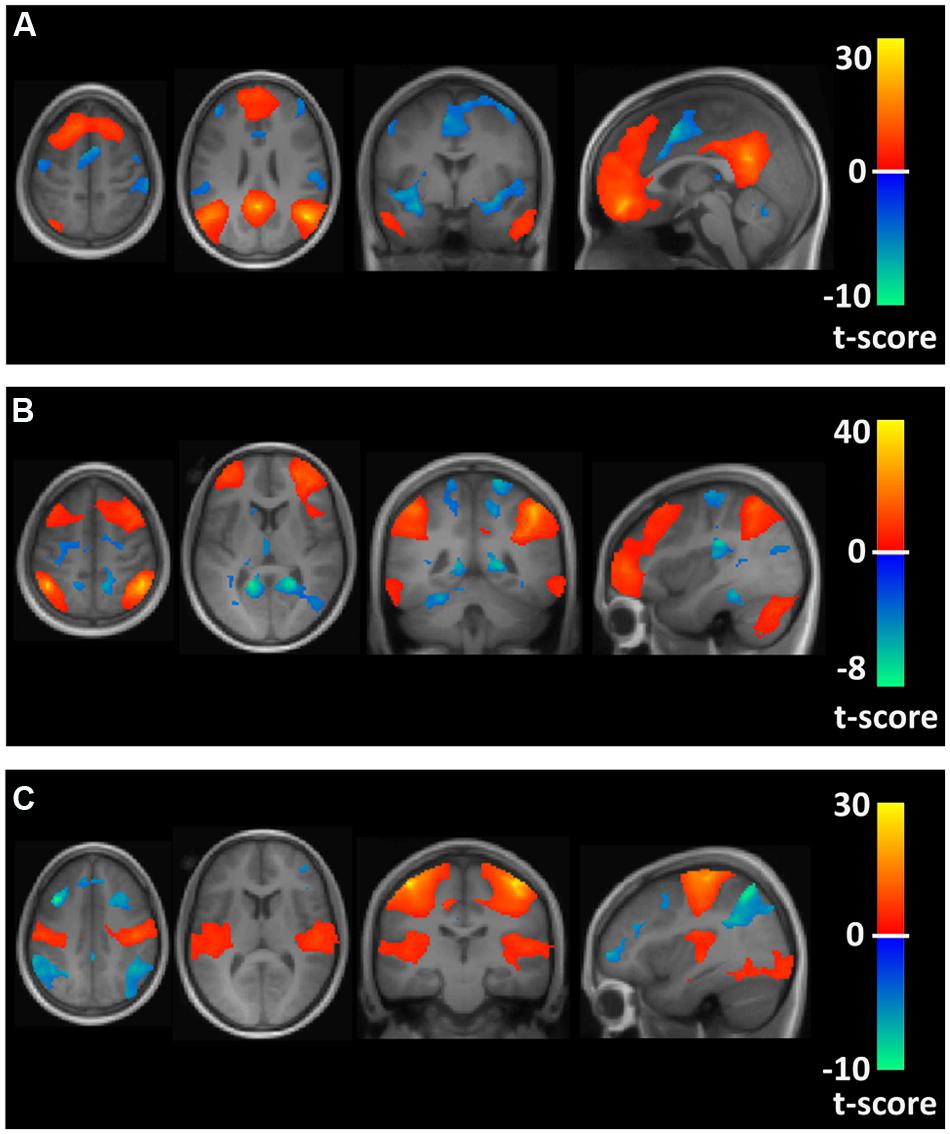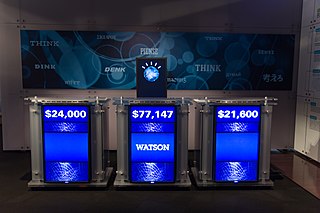
Mammals might seem like better human stand-ins than a minnow’s striped cousin, but zebrafish resemble us in surprising and useful ways. But zebrafish also offer practical advantages over other model species: They’re cheap, hardy, breed like rabbits on Viagra, and their skin can be made transparent.
To find out more about how Arizona researchers are using zebrafish in their research, read/listen to my full story at KJZZ’s Arizona Science Desk:
Tiny Fish Makes A Big Splash In Arizona Medical Research




